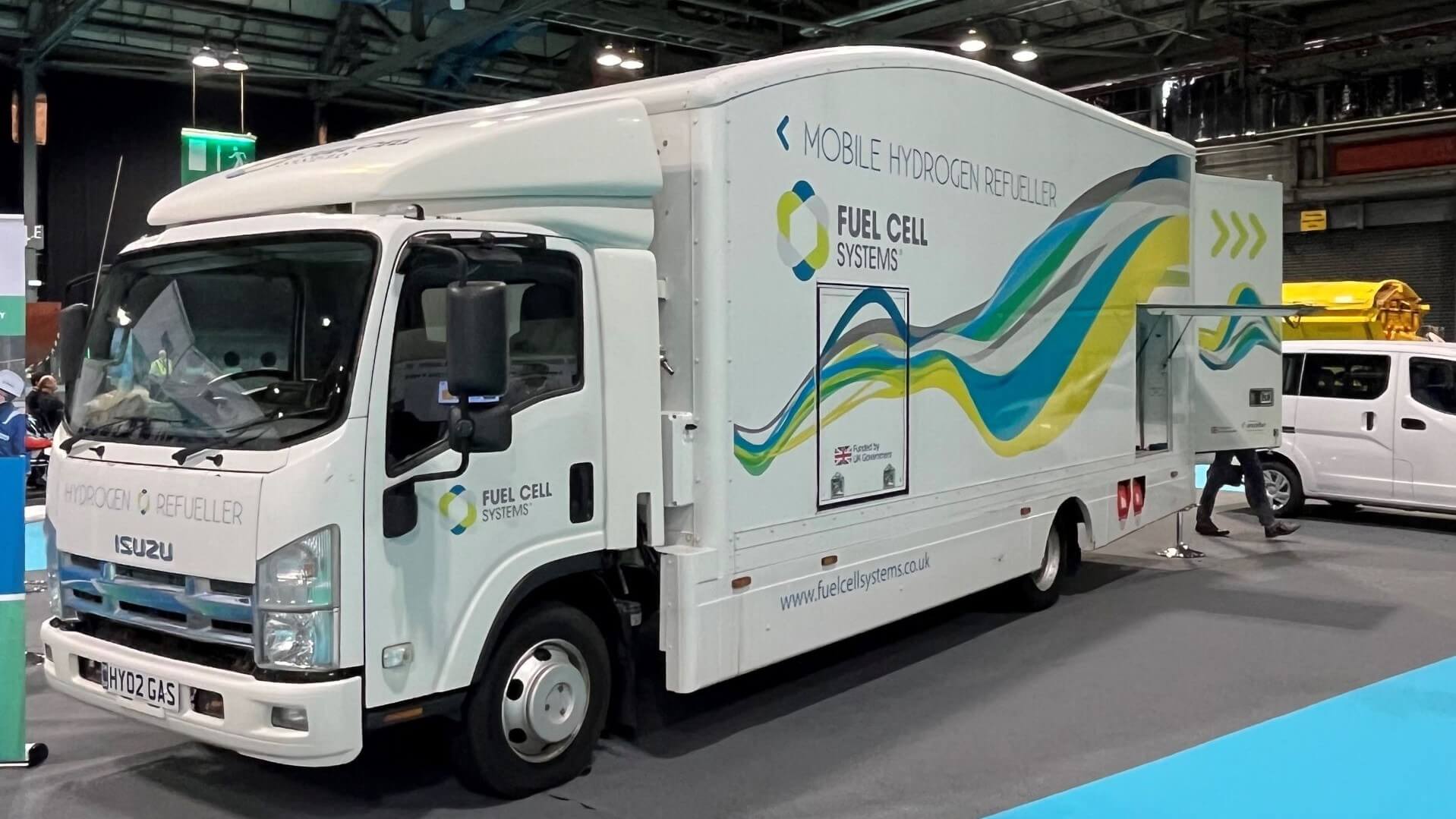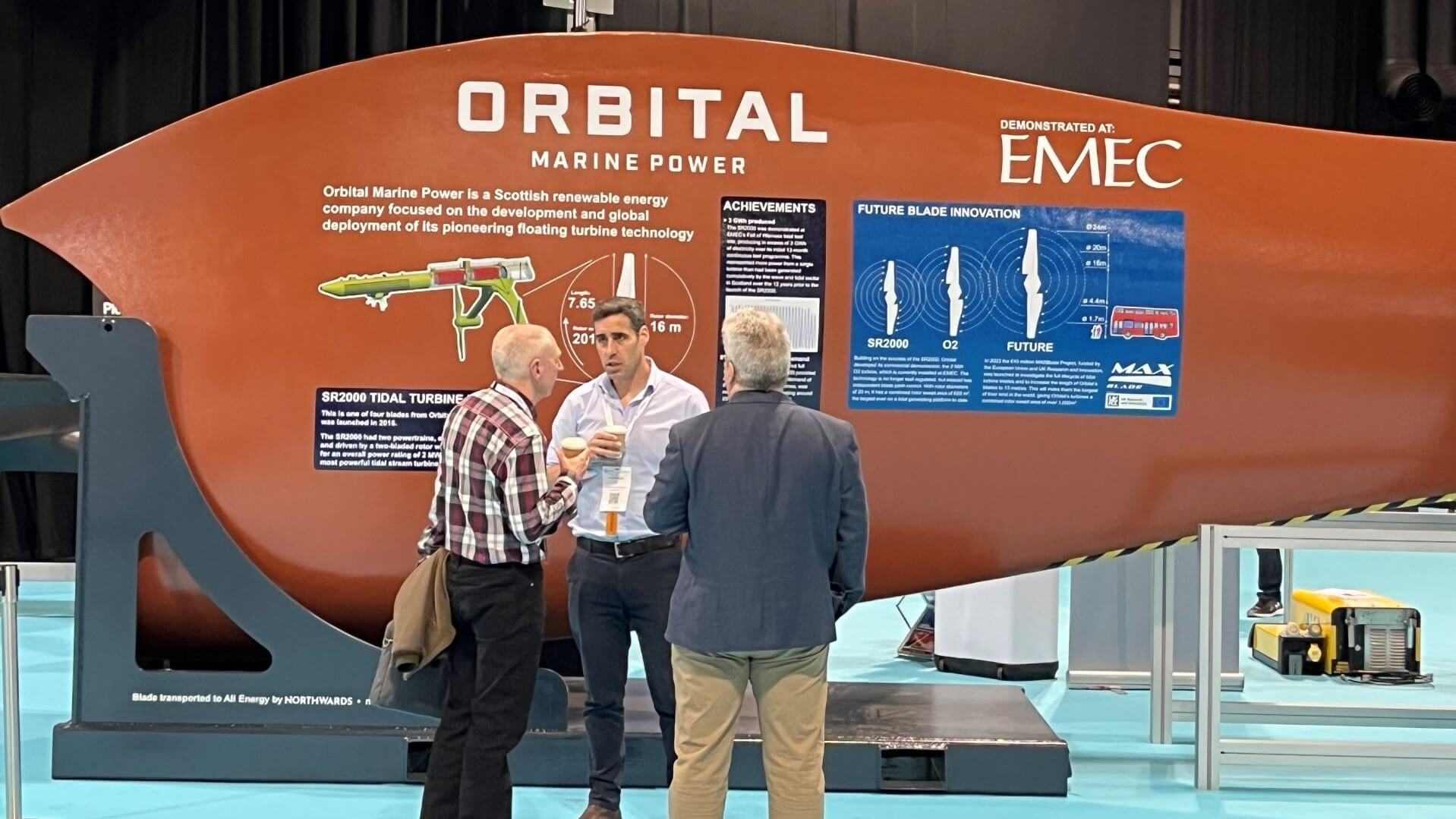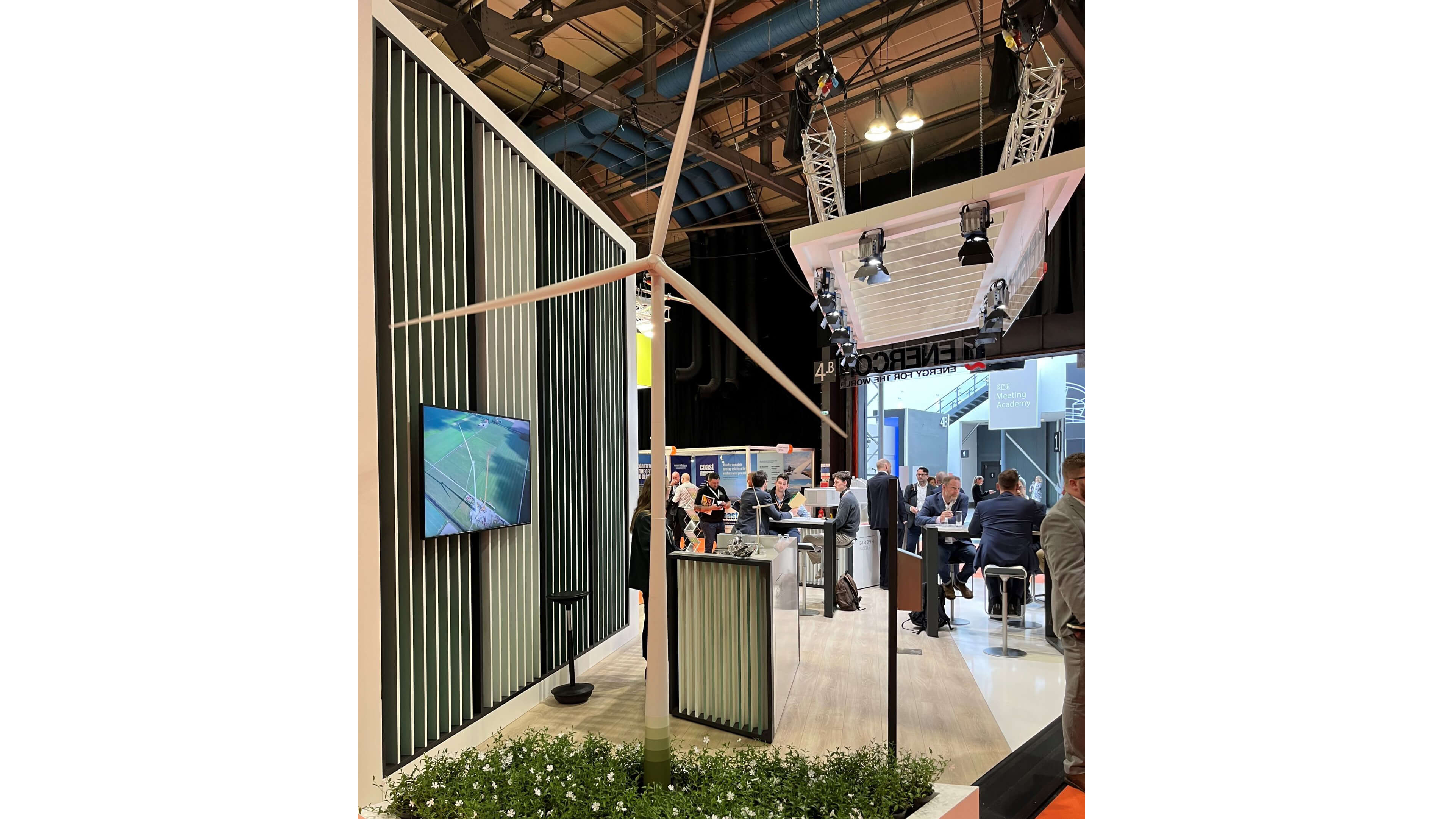UPDATED 1 Sept: The EI library in London is temporarily closed to the public, as a precautionary measure in light of the ongoing COVID-19 situation. The Knowledge Service will still be answering email queries via email , or via live chats during working hours (09:15-17:00 GMT). Our e-library is always open for members here: eLibrary , for full-text access to over 200 e-books and millions of articles. Thank you for your patience.
New Energy World™
New Energy World™ embraces the whole energy industry as it connects and converges to address the decarbonisation challenge. It covers progress being made across the industry, from the dynamics under way to reduce emissions in oil and gas, through improvements to the efficiency of energy conversion and use, to cutting-edge initiatives in renewable and low-carbon technologies.
All-Energy & Dcarbonisation moves towards a just transition
24/5/2023
7 min read
Feature
The recent All-Energy & Dcarbonisation conference and exhibition in Glasgow demonstrated how the UK sector is gaining momentum in developing renewable technologies for a just energy transition, as well as identifying some of the challenges ahead. New Energy World Features Editor Brian Davis reports.
There was a mood of optimism around the All-Energy & Dcarbonisation event earlier this month. Over 6,000 people thronged the halls and conference, glad to network freely since COVID-19 and eager to share expertise and identify potential clean tech opportunities.
There were simply too many parallel sessions to be able to do justice to all the information shared by the conference speakers and those presenting show-floor theatres on Future Talent, Offshore Wind, Hydrogen and Transport, Heat Decarbonisation, and the like. Let alone sampling all the technology start-ups offered by Innovate UK – from new software to map wind break effects, river-based turbines, to a novel bathroom de-humidifier, and much else besides.
 Advanced energy transition technology was on show at All-Energy & Dcarbonisation in Glasgow – here we see a mobile hydrogen refueller developed by Fuel Cell Systems
Advanced energy transition technology was on show at All-Energy & Dcarbonisation in Glasgow – here we see a mobile hydrogen refueller developed by Fuel Cell Systems
Photo: Brian Davis
Drafting Scotland’s new energy policy
The newly elected First Minister of Scotland, Humza Yousaf MSP, kicked off proceedings. Having received 1,500 responses to Scotland’s draft energy policy and just transition plan, he said analysis is underway to set priorities for the next three years of this Scottish parliamentary term.
Yousaf maintained that the first priority is tackling poverty, ‘recognising the opportunities of a just transition to increase the tax revenue base as well as fully unleashing the potential of the green economy’. One of the key initiatives in relation to decarbonisation is to set up a skills academy in partnership with the private sector ‘to shift from fossil fuels to green energy’, he said.
He also mentioned the disparity between Scotland and the rest of the UK in charges received for offshore wind or gas generators under network credit agreements. Furthermore, he is awaiting announcement of a timetable for the Acorn carbon capture, utilisation and storage (CCUS) scheme.
The First Minister was enthusiastic about the Scottish government’s announcement of a £500mn fund to encourage the development of Scotland’s north-east and called for the UK government to match the fund with a further £500mn, ‘so we can accelerate at pace the just transition’. Although he recognised the inability to match the fiscal leverage of the US Inflation Reduction Act or the EU Green Deal.
Mentioning new plans by Japanese company Sumitomo Electric to establish a company in the Highlands to supply power cables for offshore wind farms and further grid connections, Yousaf remarked: ‘We already know of commitment by developers of £28bn of supply chain work to come to Scotland. However, we need to ensure that these potential benefits become reality.’
With this in mind, the Scottish government has also committed £100mn to supporting the green hydrogen sector, including constructing hydrogen production on floating wind farms.

Orbital Marine Power is a Scottish renewable energy company focused on development of pioneering floating turbine technology in partnership with EMEC
Photo: Brian Davis
Climate impact
In a video link, Imperial College London’s Professor Jim Skea, a former Energy Institute President, revealed that the UK government supports his candidacy to become the next Chair of the Intergovernmental Panel on Climate Change (IPCC). He recognised that the last cycle of the IPCC was ‘the most impactful’ in terms of the 1.5 degrees report ‘and is going to be a hard act to follow!’
Skea anticipated that global warming could exceed 1.5°C before 2030 and suggested: ‘The next IPCC cycle needs to assess signs that are robust and useful against a range of contingencies and will need to feed somehow into the second global stocktake under the Paris Agreement in 2028.’
David Bunch, Country Chair of Shell UK, noted Shell’s role in establishing the largest public electric charging network in the UK, building Europe’s largest green hydrogen electrolyser, and as lead technical advisor in the Acorn project. He maintained that together with nationally determined contributions the scale of what needs to be done in only 1,500 working days to 2030 is ‘mind boggling’.
Recognising the pioneering role that the UK has played in the North Sea basin for oil and gas development, Bunch sees the country becoming a leader in offshore and floating wind, with significant export opportunities. However, he argued that: ‘We must stop demonising the role gas plays – particularly in abated gas that works in conjunction with CCS, and the role it plays in the pathway to net zero.’
He also called for more market clarity from the UK government and policymakers on lower carbon business models and incentives. ‘There is need for a clear policy framework for collaboration with public and private priorities that are aligned to which mountains we need to climb to get this work done,’ he said.
‘The next IPCC cycle needs to assess signs that are robust and useful against a range of contingencies and will need to feed somehow into the second global stocktake under the Paris Agreement in 2028.’ – Professor Jim Skea, Imperial College London and a former EI President
Five vital steps towards decarbonisation
‘I’m worried that we are not taking decarbonisation of the power system seriously,’ commented Chris Stark, Chief Executive of the Climate Change Committee (CCC).
Stark pointed out that the CCC had proposed five separate pathways for the UK to get to net zero by 2050. ‘Despite the differences, their common feature is the need to decarbonise electricity supply by the middle of the 2030s – not just in terms of power supply, but with hydrogen and CCS and grid planning,’ he said.
He quoted Scottish Energy Minister Graham Stewart as saying: ‘The road to net zero is a marathon not a sprint.’ And remarked: ‘We’re slow out of the box.’
Stark illustrated the ‘sprint to 2035’ with several charts. The first chart pointed to 60 GW of offshore wind by 2030, 70 GW of solar and new nuclear plants. ‘So far so good! We have a strategy that makes these kinds of commitments to cheap, plentiful renewables, and the willingness to put CfD (contracts for difference) to use to achieve that.’
The next chart showed interconnectors, storage and dispatchable plant, ‘which makes a more complex, investment deployment challenge’, he said. However, he maintained that the power system has to grow by 50% between now and 2035, and double by 2050, with 250 TWh of offshore wind providing the backbone to the whole energy system.

SolarCleano is a robot for cleaning solar panels, developed by an Irish firm
Photo: Brian Davis
Stark also asked some pertinent questions. Namely, ‘Is it an operable system? Is it resilient? Can it provide the security of supplies this country needs as we rely more and more on electricity?’ ‘Well, not yet,’ he reflected.
He suggested: ‘We need to think about the whole system. Consumer demand signals will be important, as well as dispatchable low-carbon plant with hydrogen generation in the mix, or gas and CCS, similar to the way we have natural gas in the mix today; with imports via interconnectors to the rest of Europe; and exports, electrolysis and power-to-gas to restore electricity in the form of hydrogen when the system has surplus generation.’
Controversially, the CCC now thinks it is important to talk about using unabated gas on the system in 2035. ‘Though there is a point in the future when we don’t,’ Stark added. ‘But gas could keep the cost low, maybe using it for just 2% of the generation for energy security.’
Looking to 2035, Stark said: ‘We need new infrastructure, not just grid CO2 storage and transport, and hydrogen production, transport and storage. We need to plan and build new dispatchable plant as low-carbon backup for the renewables on the system. In addition, we need strong signals to consumers to change the pattern of demand; with CfD realistically priced to deliver the renewable capacity required; as well as maintaining a supply chain in the UK. But most of all we need grid, to reinforce transmission and distribution across the country, with offshore corridors for new grid infrastructure and rapid connection and well-functioning planning.’
Offshore wind – criticism of leasing rounds
Colin Innes, Partner and Head of Planning at law firm Shepherd & Wedderburn, chaired the offshore wind discussion. He pointed out that the UK government target for offshore wind has risen from 40 GW by 2030 (as set out in the 2020 White Paper) to 50 GW, due to the war in Ukraine and concerns about energy security. He sees an ‘overwhelming ambition to deliver more renewables, and for offshore to be the key sector that drives the scale of renewable deployment’.
‘Ambition is absolutely key to deliver the volume of floating offshore capacity anticipated,’ added Susie Lind, Managing Director UK of BlueFloat Energy, which delivers 5 GW of offshore wind. She recognised there is a need to unlock some of the bottlenecks that are currently preventing projects coming through. ‘Fundamentally we need to move faster,’ she stated, warning: ‘We thought we were going to be a decade of delivery, but we are at risk of delivering a decade of debate!'
Lind said subsea leasing rounds always come down to the highest bidder, which tend to become ‘a race to the bottom on CfD’ and drive the wrong outcomes for projects. Therefore, ‘introducing reforms like the proposed non-price factors to CfD is very positive', she remarked. ‘And we hope to see much more meaningful outcomes in terms of skills and community benefit models, that we have not seen before offshore.’

Wind was a hot topic at All-Energy & Dcarbonisation, although most of the discussion was on offshore wind development
Photo: Brian Davis
Benj Sykes, Vice President, Offshore, at Ørsted, took up the debate and also argued for the sector to move at more pace when it comes to leasing. He complained that it’s been a ‘hugely punctuated’ leasing process. ‘As a developer I want to see regular leasing rounds and frankly don’t buy the argument that there’s already enough already out there.’ He also suggested a move to a model which isn’t solely based on price: ‘There are many other things that we want to see when we talk about a just transition, for green jobs and improving the environment, for example… using leasing to deliver more than just pounds.’
Meanwhile, Iain Sinclair, Executive Director of Renewables & Energy Transition at the Global Energy Group, emphasised the need to build the renewables supply chain to grow the economy and leverage environmental benefits.
Gillian Noble, Offshore Managing Director, Development and Operations, for ScottishPower Renewables, noted there are about 200 GW of projects waiting for connection to the grid. ‘But we can learn from others rather than waiting for the regulator and different government departments to invest in this,’ she said. ‘Other countries use a lot more real-time data to share availability and demand for grid infrastructure investment. We need to learn from that for planning, with better data collaboration creating more transparency and driving us forward to achieve the 2030 targets.’
